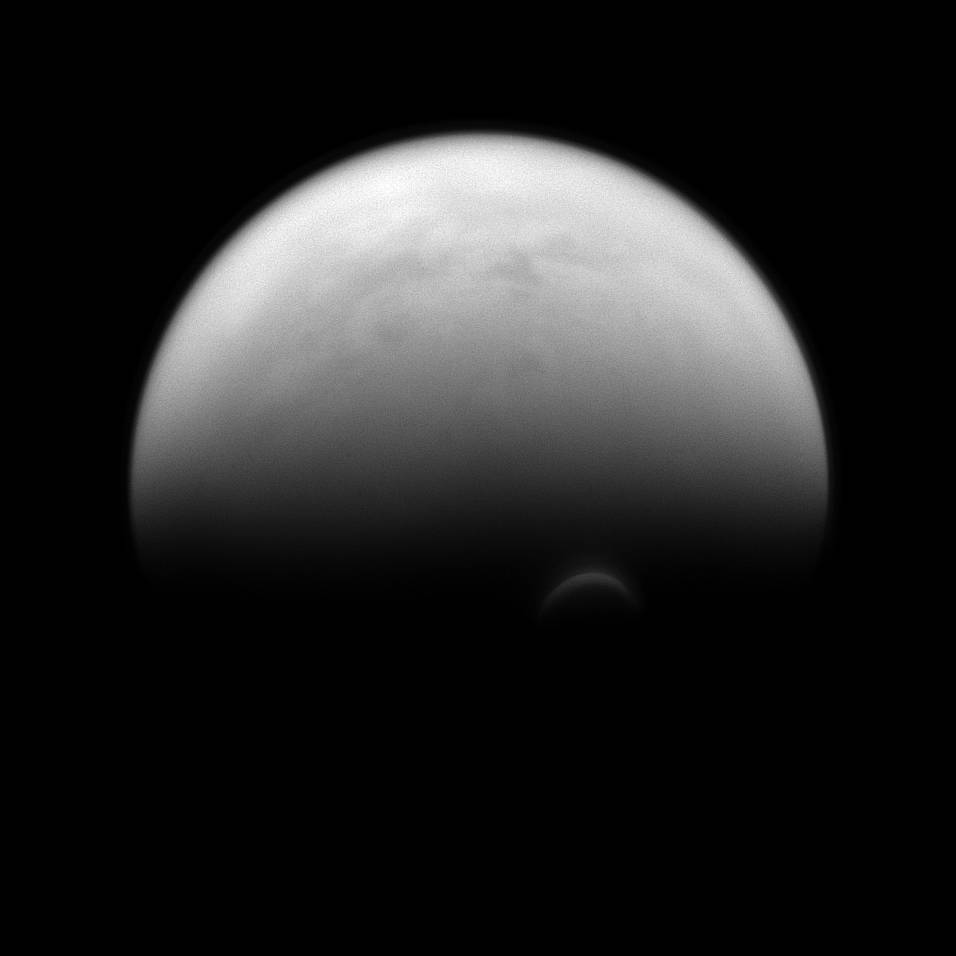The sunlit edge of Titan’s south polar vortex stands out distinctly against the darkness of the moon’s unilluminated hazy atmosphere. The Cassini spacecraft images of the vortex led scientists to conclude that its clouds form at a much higher altitude — where sunlight can still reach — than the surrounding haze.
Titan (3,200 miles, or 5,150 kilometers across) is Saturn’s largest moon. This view looks toward the trailing hemisphere of Titan. North on Titan is up and rotated 32 degrees to the left. The image was taken with the Cassini spacecraft narrow-angle camera on July 14, 2013 using a spectral filter sensitive to wavelengths of near-infrared light centered at 938 nanometers.
The view was obtained at a distance of approximately 808,000 miles (1.3 million kilometers) from Titan and at a Sun-Titan-spacecraft, or phase, angle of 82 degrees. Image scale is 5 miles (8 kilometers) per pixel.
> View a color image of the south polar vortex on Titan
Image Credit: NASA/JPL-Caltech/Space Science Institute




























